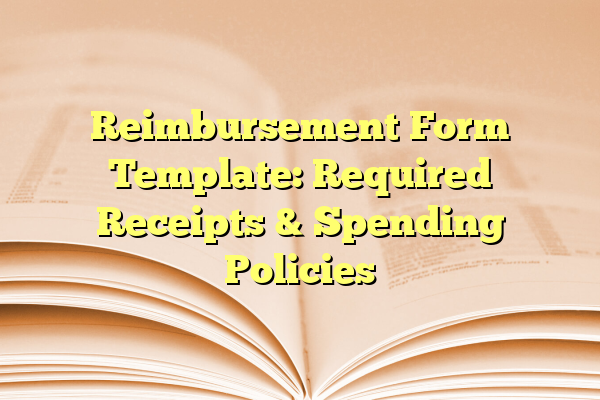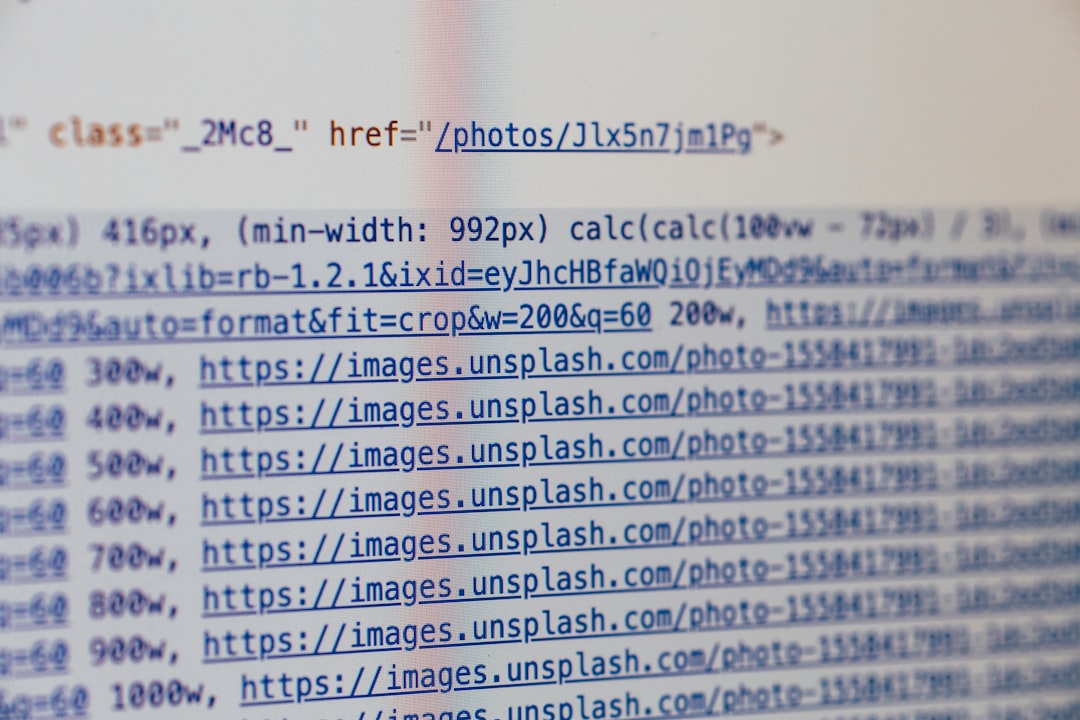
Reimbursement Form Template: Required Receipts & Spending Policies
When it comes to managing finances within an organization, maintaining a clear and standardized reimbursement policy is vital. Whether it’s for travel expenses, office supplies, or client entertainment costs, employees often need a straightforward way to recoup money spent during the course of business operations. A reimbursement form template, coupled with well-defined spending policies and required receipt protocols, ensures transparency and accountability. This article explores how to effectively use a reimbursement form template and outlines the essential elements such as required receipts and spending policies.
Contents
- 1 Why a Reimbursement Form Template is Essential
- 2 The Role of Receipts in Reimbursement
- 3 Understanding Spending Policies
- 4 Integration with Accounting Systems
- 5 Creating an Effective Reimbursement Form Template
- 6 Timely Submission and Approval Workflow
- 7 Best Practices for Reimbursement Compliance
- 8 Conclusion
- 9 FAQs
Why a Reimbursement Form Template is Essential
Organizations, both large and small, benefit from using a reimbursement form template. A well-structured template provides uniformity, which speeds up processing and minimizes errors. It also helps ensure that all submitted expenses align with company policies.
Key benefits of using a reimbursement form template include:
- Ensuring consistency across departments
- Simplifying approval workflows
- Making audits more manageable
- Reducing the likelihood of fraudulent claims
A typical form will include fields for employee information, description and purpose of expenses, cost breakdown, total amount requested, and a section for attached receipts. Often, it will also require departmental approval before being routed to finance.

The Role of Receipts in Reimbursement
One of the most crucial components of any reimbursement request is proof of purchase. Submitting receipts not only validates the expense but also provides an audit trail. Receipts should be itemized and must clearly show the vendor name, transaction date, and items or services purchased.
Organizations may specify rules about :
- Acceptable receipt formats (digital or original paper)
- Time frame for submission (e.g., within 30 days of the expense)
- Minimum amount for which a receipt is required
- How to handle lost or missing receipts
Some companies may accept a written explanation or a credit card statement for smaller amounts if a receipt is lost, but this generally depends on the discretion of the finance department and the nature of the expense.
Understanding Spending Policies
Spending policies set the stage for what is deemed reimbursable and what is not. These policies should be explicitly outlined in the employee handbook or easily accessible on the company intranet. They act as guidelines to promote fair use and fiscal responsibility.
Some common categories covered in spending policies include:
- Travel expenses: Airline tickets, lodging, meals, taxi fares, and mileage
- Meals and Entertainment: Client meetings, team-building activities, etc.
- Office Supplies: Printer ink, stationary, etc., purchased individually
- Memberships and Subscriptions: Must be pre-approved
Limits and caps often apply, such as a daily meal allowance or maximum reimbursable hotel rate. It is important for employees to review these policies prior to incurring expenses so they do not inadvertently submit non-reimbursable claims.
Integration with Accounting Systems
Modern organizations are gradually moving toward digital reimbursement solutions. These systems integrate with accounting platforms to automate recordkeeping, reduce processing time, and mitigate errors. By using software like Expensify, Concur, or QuickBooks, employees can fill out a reimbursement form with auto-filling features, scan receipts on-the-go, and track approvals in real-time.
This level of integration also ensures better data analysis and budget forecasting. It provides finance teams with live dashboards and expense categorization, improving the controls around spending behavior and budget alignment.

Creating an Effective Reimbursement Form Template
While many templates exist online, each organization should customize theirs to reflect internal policies and roles. A reimbursement form template should be compact yet comprehensive. Here are the essential fields to include:
- Employee name and department
- Date the form is being submitted
- Description of expense
- Date of the transaction
- Amount spent (with currency)
- Reason for expenditure
- Type of expense (travel, office supplies, etc.)
- Attached receipts checkbox
- Approver signature and date
Some organizations may add budget codes or project numbers for internal tracking. It’s also helpful to include a short section with instructions on how to fill out the form and the timeframe for approvals and reimbursements.
Timely Submission and Approval Workflow
Timeliness is key to any reimbursement system. Companies often introduce submission deadlines—such as requiring all expenses to be submitted within 30 or 60 days of the transaction. Delayed submissions may be subject to rejection or require justification.
The approval workflow typically involves:
- Submission by employee
- Review by immediate supervisor or department head
- Forwarding to finance or HR department
- Release of funds via payroll or direct banking
Digital systems often streamline this process, sending automatic reminders and notifications when action is required.
Best Practices for Reimbursement Compliance
Maintaining reimbursement compliance is a shared responsibility between the employer and the workforce. Here are a few best practices:
- Educate employees on current reimbursement policies
- Provide ready access to approved vendor lists
- Encourage digital storage of receipts using mobile apps
- Regularly review and update the reimbursement form template
- Audit a sample of reimbursement forms each quarter
Periodic training sessions or webinars can also be conducted to keep staff informed about updates or changes in policy.
Conclusion
A robust reimbursement strategy doesn’t just eliminate financial discrepancies—it enhances trust. Employees feel confident when they know that legitimate expenses will be reimbursed efficiently. On the flip side, finance departments operate with greater control, ensuring that spending remains within budget and follows regulatory frameworks. A thoughtfully designed reimbursement form template, alongside strict receipt protocols and coherent spending policies, is key to flawless operational finance.
FAQs
- Q: What receipts are required for reimbursement?
A: Itemized receipts showing the vendor name, transaction date, and purchase details are required. Digital copies are usually acceptable under most company policies. - Q: Can I submit a reimbursement form without a receipt?
A: Some organizations allow reimbursements without receipts for small amounts (e.g., under $25) but usually require a written explanation or supervisor approval. - Q: How long do I have to submit a reimbursement form?
A: Most companies require submission within 30–60 days of the expense being incurred. Late submissions may be denied or delayed. - Q: Are meals during personal travel reimbursable?
A: No. Only meals directly related to business travel or client engagement are considered reimbursable under typical policies. - Q: How are reimbursements paid out?
A: Reimbursements are typically processed via payroll or directly deposited into the bank account provided by the employee during onboarding.
